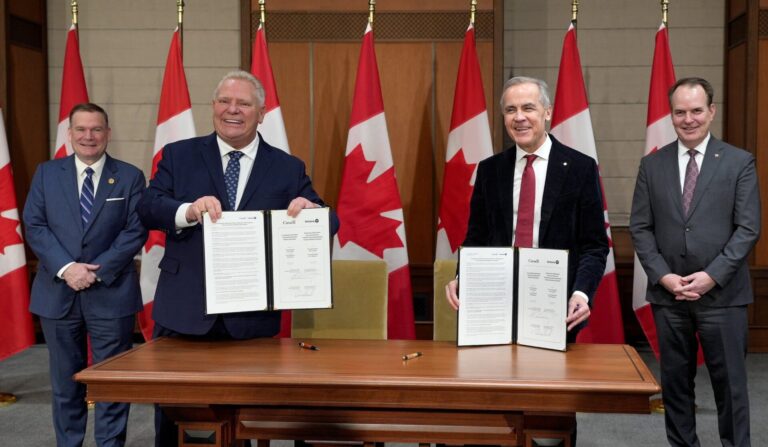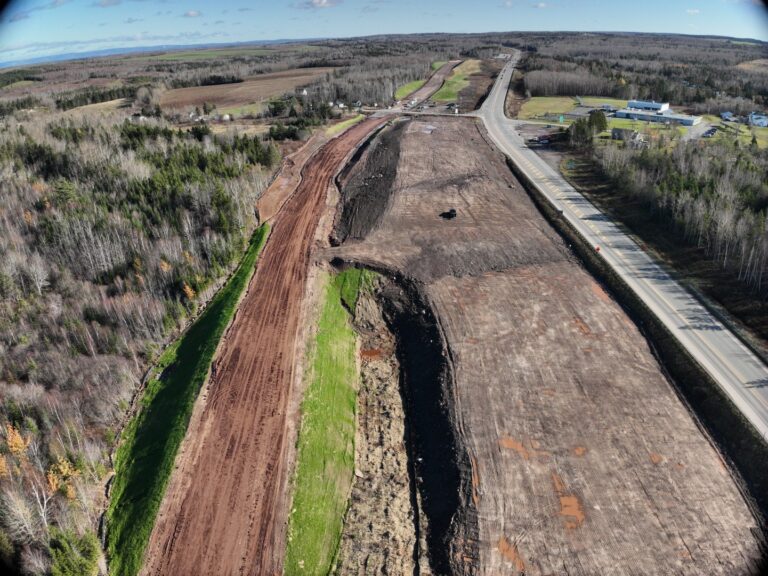The Government of Canada has introduced new legislation, One Canadian Economy: An Act to enact the Free Trade and Labour Mobility in Canada Act and the Building Canada Act, which it says will remove federal barriers to internal trade and labour mobility, and advance nation-building projects crucial for driving Canadian productivity growth, energy security, and economic competitiveness.
“Canada’s new government is building one Canadian economy. Today’s legislation will remove federal barriers to internal trade, unleash Canada’s economic potential, and get major, nation-building projects built faster across the country. It’s time to build big, build bold, and build now,” said Prime Minister Mark Carney.
The proposed legislation will accelerate the realization of major, nation-building projects that will help Canada become the strongest economy in the G7, deepen our trade relationships with reliable partners, and create good Canadian jobs. The federal government will determine whether a major project is in the national interest based on consultations with provinces, territories and Indigenous Peoples.
“This new legislation is about building a stronger, more connected Canada by making it easier to trade, faster to build big projects, and better at creating good opportunities for people, businesses, and Indigenous communities from coast to coast to coast. Energy and natural resources are Canada’s power, and we will deliver projects that leverage these assets in order to strengthen our security, sovereignty, and economy,” said Tim Hodgson, Minister of Energy and Natural Resources.
Projects will be evaluated in accordance with the following criteria:
- Strengthen Canada’s autonomy, resilience and security;
- Provide economic or other benefits to Canada;
- Have a high likelihood of successful execution;
- Advance the interests of Indigenous Peoples; and
- Contribute to clean growth and to Canada’s objectives with respect to climate change.
Projects will only be designated following full consultation with affected Indigenous Peoples.
When a project is designated, it is conditionally approved upfront. The project will go through existing review processes, with a focus on “how” the project will be built as opposed to “whether” it can be. The federal major projects office will coordinate and expedite these reviews.
The results, along with consultation with Indigenous Peoples, will inform a single set of binding federal conditions for the project. These conditions would include mitigation and accommodation measures to protect the environment and to respect the rights of Indigenous Peoples. The federal major projects office will include an Indigenous Advisory Council with First Nation, Inuit, and Métis representatives. The federal government will also allocate capacity funding to strengthen Indigenous Peoples’ participation in this process.
The First Nations Major Projects Coalition (FNMPC) called on the Government of Canada to ensure that First Nations are true partners at every step of the process, including to ensure that the legislation and regulations explicitly respect and protect Aboriginal and treaty rights, upholds the UNDRIP principles of FPIC, and advances the economic and environmental interests of First Nations across the country. In its submission to the Government, the FNMPC emphasized that First Nations must play a central role in the decision-making process around national-interest projects and that no national strategy to improve project delivery will succeed without embedding Indigenous partnership as a foundational element
“We understand the federal government’s interest in moving fast to build out Canada’s next generation of nation-building energy, mining, and infrastructure projects,” said Sharleen Gale, Executive Chairperson of FNMPC’s Board of Directors. “But history has shown us that speed without partnership leads to delay—not progress. This legislation could be a turning point if it is designed and administered in true partnership with First Nations.”
Removing Internal Trade and Labour Mobility Barriers
This new legislation builds one economy out of thirteen. It removes federal barriers to free trade within our borders while protecting workers, the environment and the health and safety of all Canadians.
In cases where there is a federal barrier, the legislation will allow a good or service that meets comparable provincial or territorial rules to be considered to have met federal requirements for internal trade. For Canadian businesses, this will make it easier to buy, sell and transport goods and services across the country.
“Our country thrives when we unite around a common purpose. In response to the evolving global trade landscape, the Government of Canada is taking decisive action to strengthen Canada’s economy for generations to come. Through this legislation, we are giving ourselves the means to lift obstacles to economic growth and productivity, realize nation-building projects, create jobs and allow businesses to expand. Together with provinces and territories and Indigenous communities, we will make Canada the strongest economy in the G7,” said Dominic LeBlanc, Minister responsible for Canada-U.S. Trade, Intergovernmental Affairs and One Canadian Economy.
On labour mobility, the new legislation will provide a framework to recognize provincial and territorial licenses and certifications for workers. This means that a worker authorized in provincial or territorial jurisdiction can more quickly and easily work in the same occupation in federal jurisdiction.
“Trade within Canada is an essential driver of the Canadian economy, creating jobs, helping businesses expand, and enhancing consumer choice. Every year, more than $530 billion worth of goods and services move across provincial and territorial borders. This is equal to almost 20% of Canada’s gross domestic product. That is with internal barriers holding us back. Imagine what we could achieve if people and goods flowed freely across borders in a truly unified Canadian market,” said Chrystia Freeland, Minister of Transport and Internal Trade.
Featured image: (Government of Canada)












